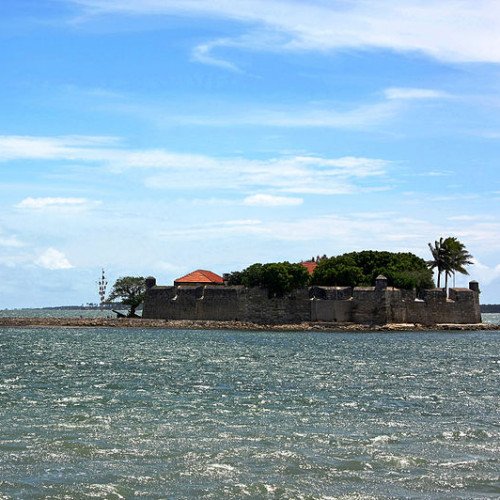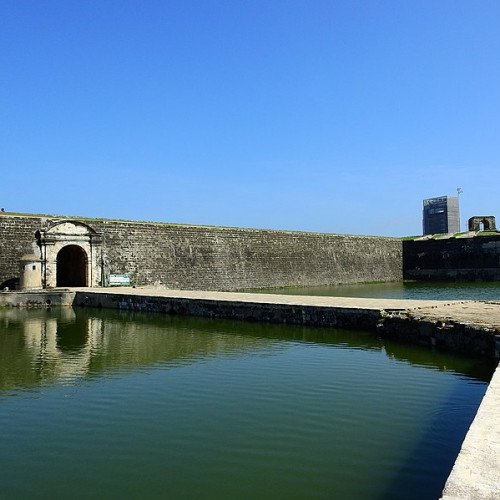Castles of "Sri Lanka" FORT HAMMENHIEL vs JAFFNA FORT

FORT HAMMENHIEL
Fort Hammenhiel (Tamil: அம்மன்னீல் கோட்டை, romanized: Am'maṉṉīl Kōṭṭai; Sinhala: හැමන්හිල් බලකොටුව, romanized: Hæminanhil Balakotuwa) is a fort built around a small island between the islands of Kayts and Karaitivu of Jaffna Peninsula in Northern Sri Lanka. The Portuguese built the fort, to guard the entrance to the Jaffna peninsula, in the mid 17th century of quarried coral naming it Fortaleza do Caes (Fort Royal). The Dutch, under the command of Captains Cornelies Reb, Piester Waset and N. van der Reede, captured the fort in March 1658 and subsequently renamed it Hammenhiel (Heel of the Ham), as they considered that shape of Ceylon resembled a smoked ham and the fort was located at the point where the shank bone projects. The Dutch rebuilt the fort in 1680, constructing a stone breakwater, filling in the hollow ramparts, replacing the upper floor with a stone vault and building a brick lined reservoir to the north of the fort. The prison has nine large dungeons to store gunpowder. The Dutch maintained a garrison of about thirty soldiers under the charge of a Lieutenant or Ensign. The British used the fort firstly as a maximum security prison and then as an infectious diseases hospital.
Statistics for this Xoptio

JAFFNA FORT
Jaffna Fort (Tamil: யாழ்ப்பாணக் கோட்டை, romanized: Yāḻppāṇak Kōṭṭai; Sinhala: යාපනය බලකොටුව Yapanaya Balakotuwa) is a fort built by the Portuguese at Jaffna, Sri Lanka in 1618 under Phillippe de Oliveira following the Portuguese invasion of Jaffna. The fort is located near the coastal village of Gurunagar. Due to numerous miracles attributed to the statue of Virgin Mary in the church nearby, the fort was named as Fortress of Our Lady of Miracles of Jafanapatão (Fortaleza de Nossa Senhora dos Milagres de Jafanapatão). It was captured by the Dutch under Rijcklof van Goens in 1658 who expanded it. In 1795, it was taken over by the British, and remained under the control of a British garrison till 1948. As the only large military fort in the country, due to the presence of only government and military buildings within its ramparts, it was garrisoned by a detachment of the Ceylon Army. With the onset of the Sri Lankan Civil War it came under siege on several occasions and was the scene of pitched battles. From 1985 to 1995 it was under the control of the LTTE during this time the LTTE destroyed several of key features to stop the Army getting control due to the site being used to stage attacks but it was recaptured by the Sri Lanka Army in 1995 after a 50-day siege during Operation Riviresa. It was also vandalised by locals to rebuild houses damaged from the war . Today it remains garrisoned by a detachment of the Sri Lanka Army with limited access to visitors and is being renovated with Dutch funding. Buildings inside the fort include the Governor's residence (King's House), Queen's House, Kruys Church, the Garrison Parade Ground, Police quarters and several buildings from the Portuguese era.